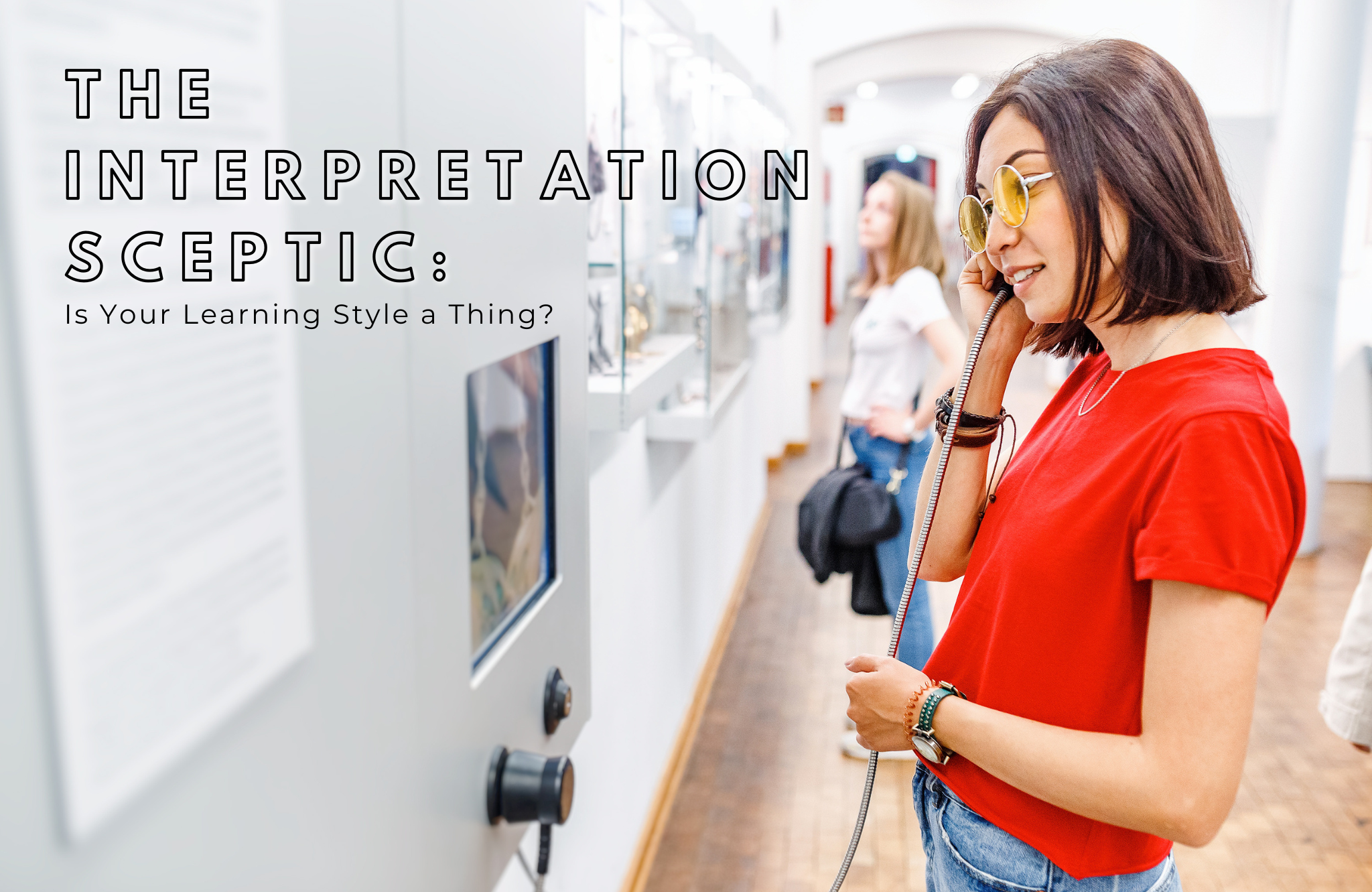The Interpretation Sceptic: Is Your Learning Style a Thing?

The Interpretation Sceptic: Is Your Learning Style a Thing?
February 6, 2025 by Taylor Studios
“My preferred learning style is reading.”
“I am a visual learner.”
“My learning style is kinesthetic, I forgot what that even means.”
I am old. Back in my day, there was only one grade school learning style: memorization. This “style” was strictly enforced by the edge of a 12-inch ruler.
I was interested in learning styles because it may directly correlate to interpretive exhibit design, which relies heavily on non-personal interpretation. Learning styles just felt intuitive, common sensical. It did not take long to discover that I, and apparently a large swath of educators, implemented this theory before confirming it. To ensure we are all on the same page, learning styles is widely used to describe how learners gather, sift through, interpret, organize, come to conclusions about, and “store” information for further use.
There are four learning styles: visual, auditory, kinesthetic, and reading/writing.
Despite a study from 2009 (the most cited learning styles study per Google) named “Learning Styles: Concepts and Evidence,” which largely questions the veracity of the theory, the theory persists.
A summary of the findings includes: “… at present, there is no adequate evidence base to justify incorporating learning styles assessments into general educational practice.”
To ensure this 2009 study had not been overturned, I found 2024 articles maintaining their mythological status.
For interpretive planners and content developers, there is a similar concept that does have research backing: multi-modal learning. Multi-modal learning is when multiple modes of learning, e.g., visual and auditory, are used simultaneously. This practice enhances comprehension.
I will take multi-modal learning over memorization and rulers any day of the week